Some of the links in this post may be affiliate links.
The topic of how to water orchids has caused much confusion for many people. Throughout the years, I’ve helped many clients be successful with orchid care. Keep reading to let me show you three methods that I use, and that you can be successful with, when it comes to watering your Phalaenopsis or Moth Orchid.
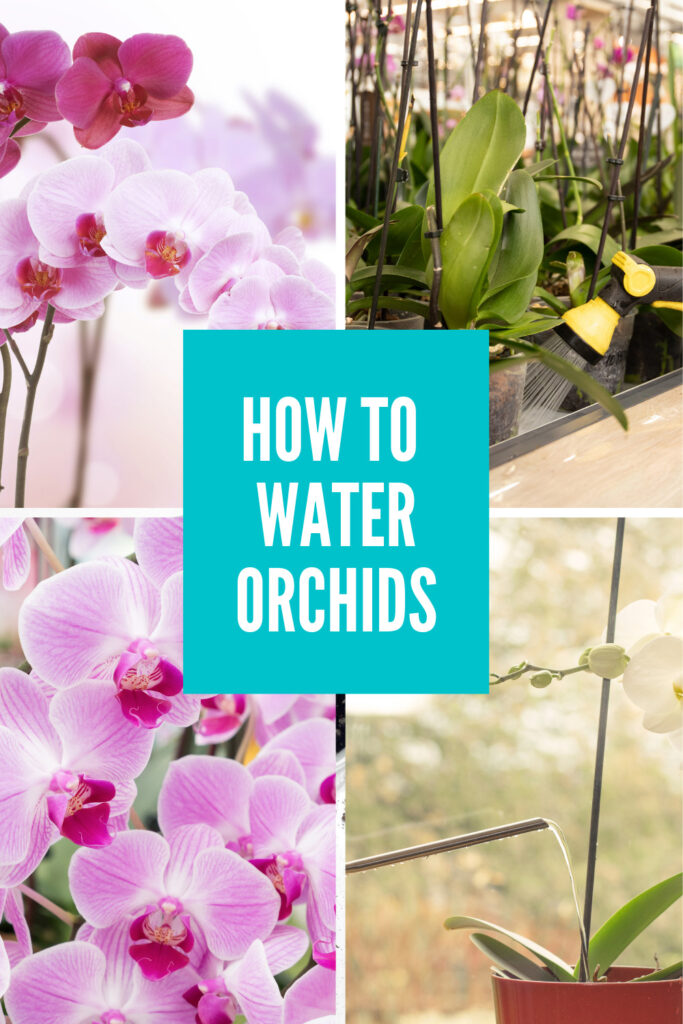
Table of Contents
What is the best way to water an orchid?
In this post, I will go through in detail 3 ways to water your orchid and some important information that you need to know about each one:
- Stream water through the pot until the potting medium is thoroughly soaked.
- Give your plant a good soak in a cachepot or bucket for a period of time (this is best for very dehydrated plants).
- Place your plants outdoors during warm weather, or during periods of rain.
Notice I did not include ice cubes as a method to water your orchids. I’ll explain why later.

Whatever method you use, water quality is an important consideration, and if you have treated water from a water softening unit, do not use this to water your orchids.
Most of these units exchange calcium and magnesium with sodium, and sodium is toxic to plants.
If you are using RO water or distilled water, you’ll need to add fertilizer to replace necessary nutrients. Many orchid enthusiasts have great success using the MSU Orchid Fertilizer (link to Amazon) that is specially formulated for these cases.
I personally have been using tap water for years without any issues and I live in a hard water region (though rain water would be superior if you can collect it) and I supplement with Dyna-Gro Grow fertilizer with almost every watering (1/4-/12 teaspoon per gallon), though I am experimenting with different fertilizers. For more details, check out my post on how to fertilize orchids.
Now let’s talk about the actual watering methods:
1. Stream Water Through in Your Sink
This is the simplest method that you can use for routine watering of your plant. Take your plant to the sink and stream lukewarm water through the pot so that you thoroughly soak the potting medium (whether you’re using orchid bark or sphagnum moss).
Be sure to moisten everything well!
Water temperature is important, so avoid using water that is too cold because this can shock your plant.
Remember, these are tropical plants and are used to warm conditions, so make sure you use tepid water and not cold water.

Allow all water to drain away through the drainage holes, and you’re done.
This method is great if your plant is in good condition and not terribly dehydrated. It is also my preferred method for orchids growing in sphagnum moss.
If you’ve neglected your plant and your orchid bark has gone terribly dry, you can use this method, but I especially recommend using method #2 in the next section.
(If you leave your plant too dry for too long, it will first start to droop and then you will get wrinkled orchid leaves.)
I also like to wet the entire plant in order to rinse dust off the leaves and moisten any aerial roots that otherwise would not get any attention. This will also help deter and help to wash away any pests.

Once I’m done, I turn the plant upside down and gently shake it in order to dislodge any water that may have collected in the crown of the plant (where the leaves join together in the center of your plant).
If you have stagnant air with poor air circulation combined with water lodged in the crown of the plant, this could encourage crown rot.
If it’s impractical to turn your plant upside down, I sometimes just take a deep breath and blow out any water that has accumulated in the middle of the plant! Whatever works for you.
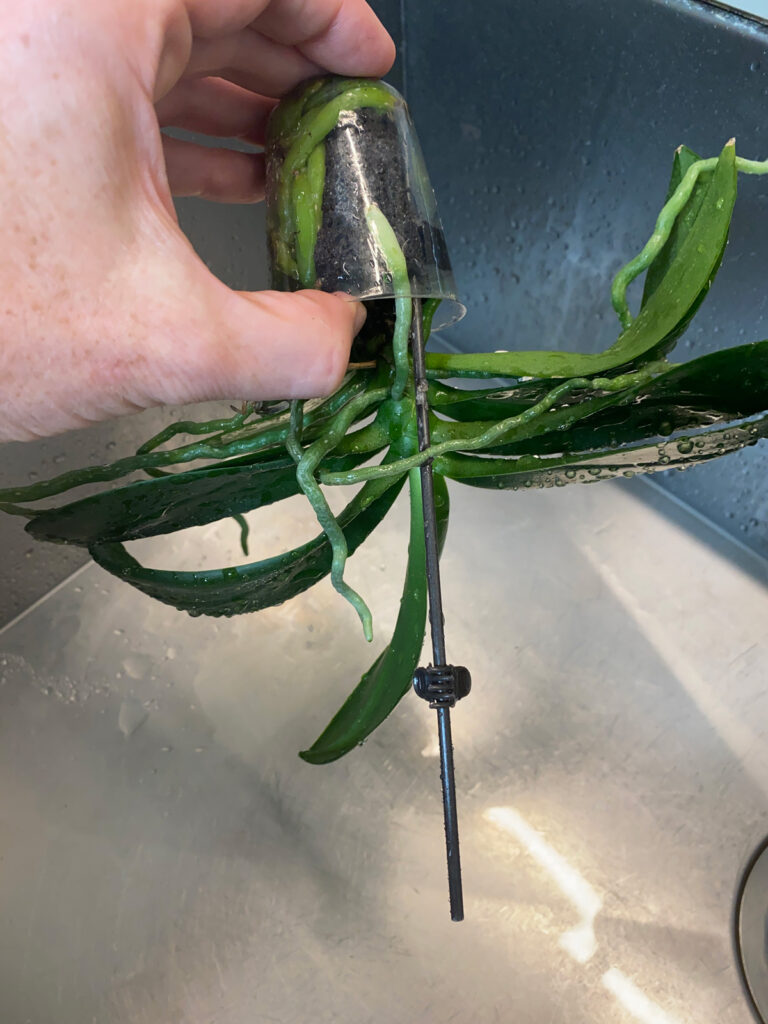
If you want to learn all about how to get your orchid to rebloom reliably and have healthy, thriving moth orchid plants, don’t miss my signature, online orchid care course, Become an Orchid Master. It also includes bonuses with support from me, personally, to guide you in your orchid journey!
2. Soak Your Orchid for More Intensive Watering
You can use this method for routine watering as well, and is especially beneficial if your bark mix has gone really dry and you need to be able to increase the water retention to previous levels.
When bark or even sphagnum moss (whatever your orchid happens to be growing in) goes completely dry, it is sometimes difficult to “re-wet” and this method will help accomplish that.
Depending on how dry your plant is, simply slip your plant into a decorative pot or bowl of water, and let it soak for at least 15-30 minutes.
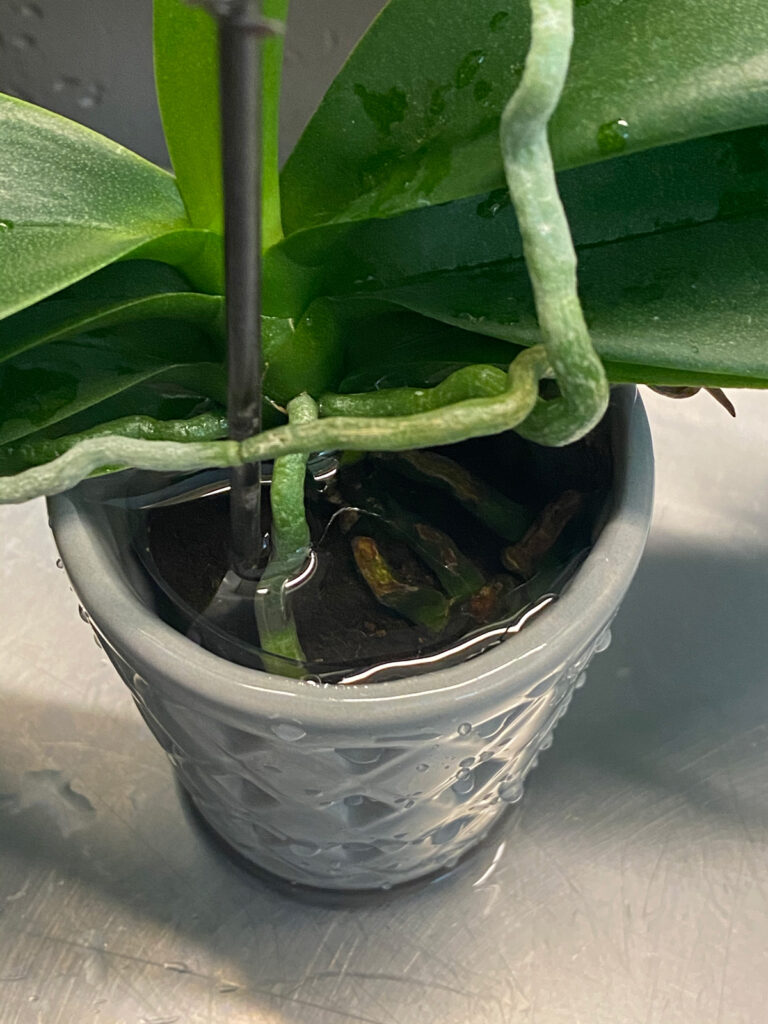
This will not rot out your plant. I’ve seen some sources saying that soaking your plant longer than 5 minutes will cause your plant to rot and it’s simply not true! You’re not leaving your orchid in water for days.
In fact, if you have a severely dehydrated plant with shriveled roots, you can use this method to soak your plant even overnight and do this at least weekly until it starts to revive.
Once your soak is done, take your plant out of the exterior pot, let the water drain out, take the exterior pot and empty the water in the bottom of the pot, slip your plant back in and you’re done.
I’ve used this method many times and have never had root rot before, as long as you have a dry period in between watering.
I don’t typically recommend this soaking method for sphagnum moss, unless it has gone so dry that you need to rehydrate it…so after you do that, drain excess water away and then from that point forward, use the top watering method. Sphagnum moss holds a lot of water, so I prefer using method 1 on a regular basis.
3. Let Mother Nature Water Your Orchids
I often take my orchids outdoors for the summer and place them in the shade for a few months. There are many benefits to placing your orchids outdoors:
- Rainwater is a superior form of water for your orchids or any houseplants. And besides this…
- The air circulation is very beneficial for plant growth.
- The natural temperature drop in the evening often triggers more blooming. Don’t allow your plants to be outside if there are extended periods below 55°F (13°C). They do not like cold temperatures.
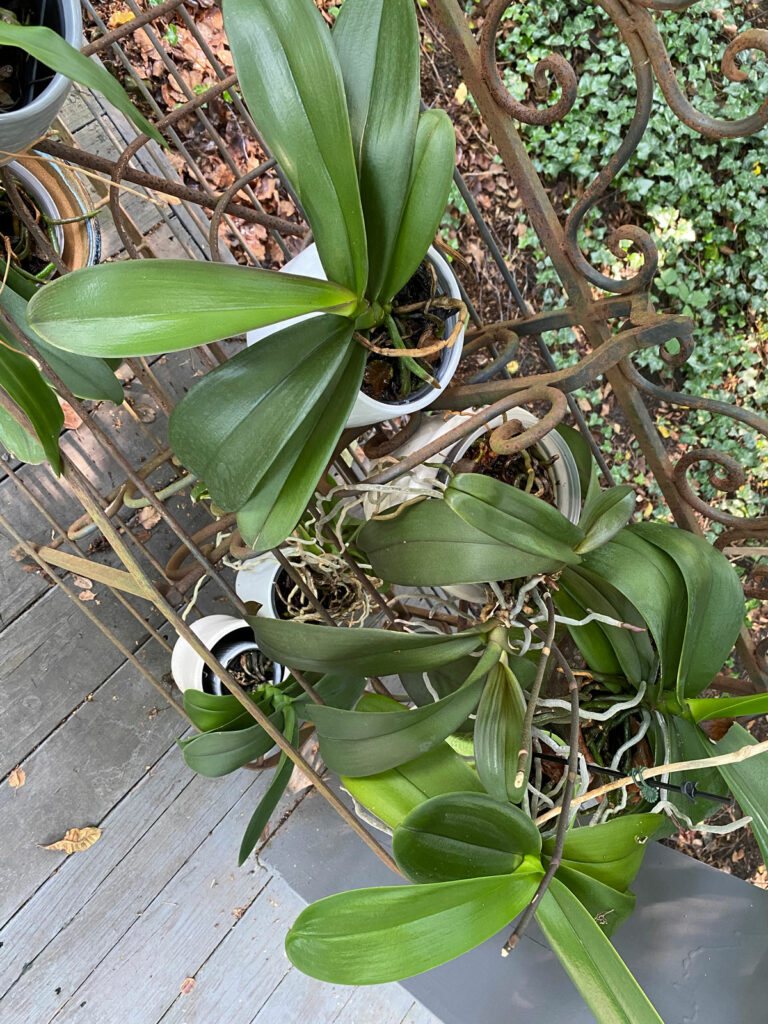
Most of my orchids are growing in clear plastic pots with drainage holes that are slipped into ceramic, decorative containers with no drainage hole.
After a good rain, if your decorative pots have no drainage holes, water will accumulate and you’ll have to empty it out.

In the photo below, I lifted my clear plastic pot (with drainage holes) and allowed excess water to drain away, and then I dumped the excess water out of the exterior ceramic pot and placed the plant back in.
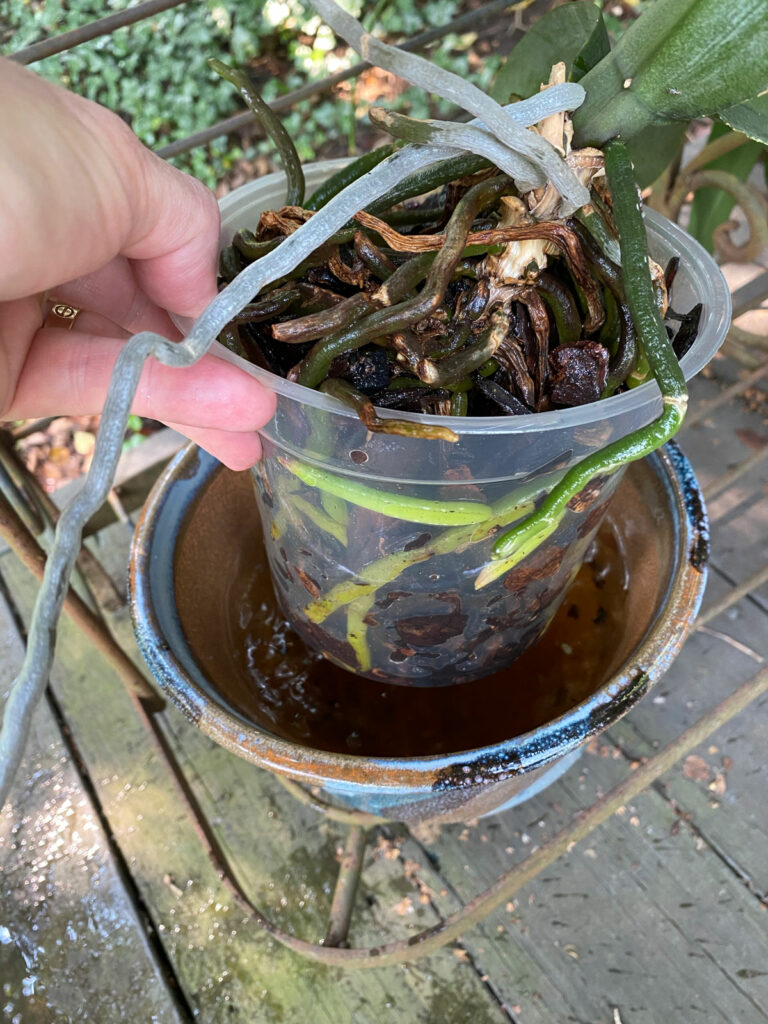
How do you know when to water your orchid?
Moth orchids do not like to go completely dry. If your potting media has gone completely dry, go ahead and water immediately otherwise your plant will start to suffer.
The downside of moth orchids that is that they only grow one or two new leaves per year in many cases, so if you are not attentive with watering, you can get droopy orchid leaves and yellow leaves rather quickly.
Here are some additional watering tips:
- Stick your finger in the bark mix or sphagnum moss. If it feels wet, don’t water. If it is just barely damp, you can probably wait another day or two. This is my personal, preferred method.
- If you don’t want to use the finger test, you can either employ the pencil trick. Stick the sharpened end of a pencil deep into the potting medium. Leave it in for a few minutes, and if it has darkened, there is enough moisture. If it appears the same color, go ahead and water. You can even use a bamboo chopstick or wooden skewer as an alternative.
- If your home has very low humidity, your potting media (as well as the aerial orchid roots) will dry out more quickly so keep an eye on things! In a more humid environment, your potting media will take longer to dry out.
- If your orchid is growing in sphagnum moss, water whenever the top inch or two has dried out.
- If your orchid is growing a bark mix, I think it’s OK to use a watering schedule. I never use a strict watering schedule for other plants growing in soil/potting mix, but you would be safe to do a once a week watering schedule for orchids growing in a bark mix. The key is to observe adjust when you need to.
Now, if you want a fun project, have you ever tried growing orchids in water culture? This method uses no medium at all (no bark or moss). And it’s super fun to do!
Why you should not use ice to water your orchids
The natural habitat of most Phalaenopsis orchids is warm and tropical so ice makes no sense.
In fact, if ice that comes in contact with an orchid’s roots they’ll quickly become damaged. There are several reasons why this can be dangerous, and I’ve written a detailed blog post that described why you shouldn’t water orchids with ice.
Lastly…are you having a hard time getting your orchid to rebloom? Check out my post to help you out:
How to Make an Orchid Grow a New Spike – 1 Little Known Secret

How do you water your orchids? Comment below. I’d love to hear!


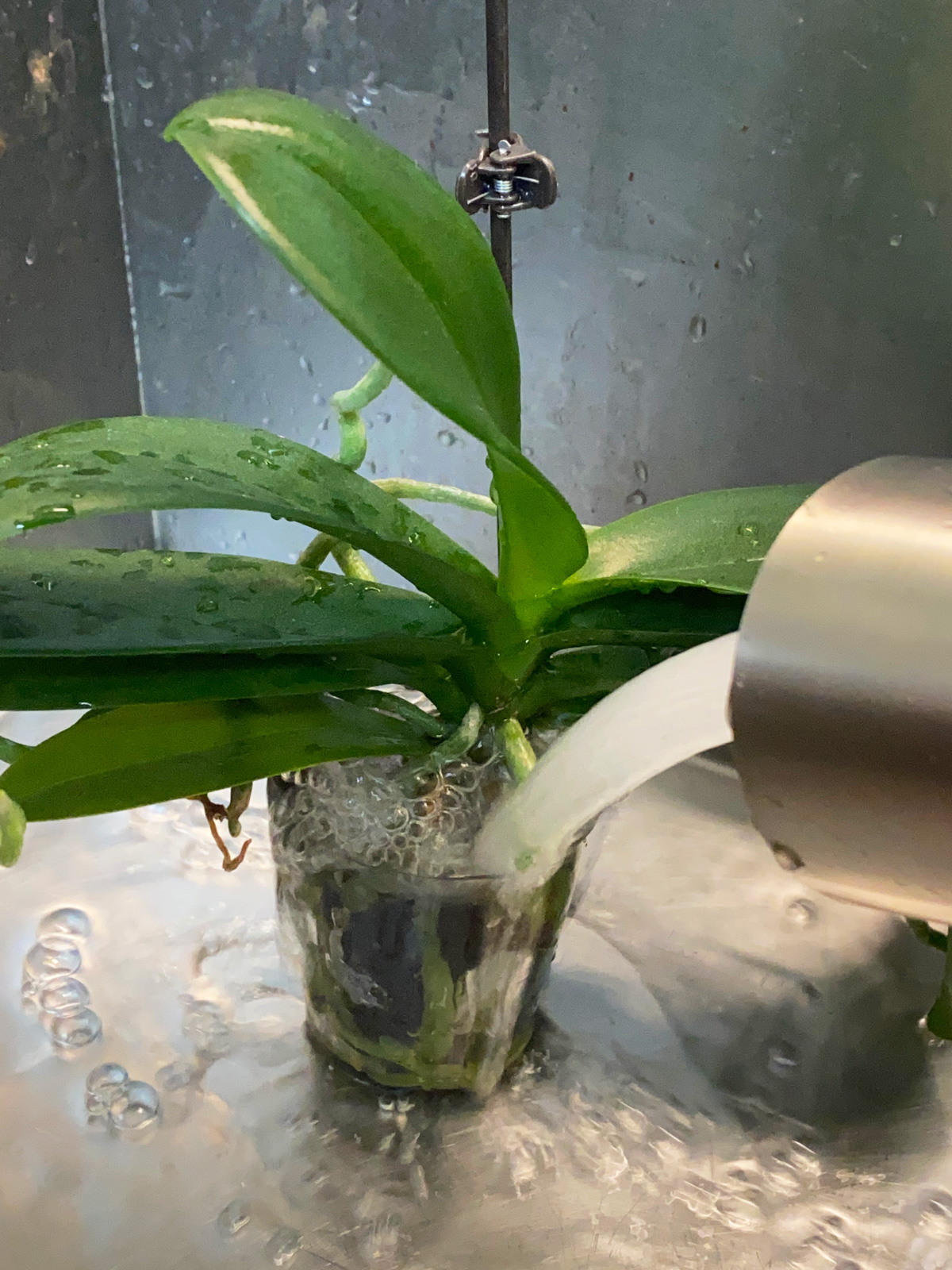


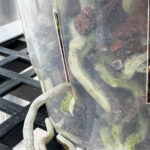

Sheila
Saturday 4th of October 2025
Is there anything you can do when you see the petals beginning to wilt too soon, please?
Raffaele Di Lallo
Monday 13th of October 2025
The flowers can wilt for a number of reasons, but remember that if they've been blooming for months, they will wilt and fall off. It's totally natural. You can encourage reblooming though by trimming the flower spike and it will grow secondary flower spikes off the original one. Watch my YouTube video here and you will see what I mean: https://youtu.be/7lx-gmaht8c
MEGAN
Saturday 4th of October 2025
I use the water culture method for my orchid. It's in the process of growing a new flower spike.
Raffaele Di Lallo
Monday 13th of October 2025
It's fun to experiment with water culture.
Thomas Whiteman
Saturday 12th of July 2025
I soak my orchids every other week for 15 min. and fertilize once a month I use bark and shreded moss and crumpled peanut hulls as a planting mix seems to work very well.
Raffaele Di Lallo
Saturday 12th of July 2025
Sounds like you found a good routine that works for your plants!
Emma
Sunday 16th of February 2025
This was a super helpful blogpost - thank you! I use bark for my potting mix and don’t follow a set schedule I had been using bottled water but I am going to switch to tap and water weekly. I also have what I think is a dead orchid but I’m going to leave it soaking overnight and see if I can revive it. Thanks for all the info!
Raffaele Di Lallo
Monday 17th of February 2025
You're very welcome Emma! I'm glad you enjoyed the blog post.
Helen
Wednesday 18th of December 2024
I just wanted to say I am really enjoying reading your articles! Learning information I couldn’t find anywhere else. Thank you!
Raffaele Di Lallo
Wednesday 18th of December 2024
So happy to hear that Helen! Thanks for commenting!